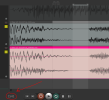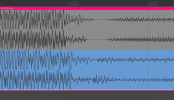sixtystring
Inspired
20.02 exhibits the same behavior as 19.06. In the image, top is 19.06 and bottom is 20.02. in both cases the gap is > 1500 samples which would be over 30 ms. In the wiki, it describes these audio gaps as "short"...which I would assume to mean much less than 30ms.
I guess this circles me back around a bit...
First, why is the gap apparent going from Dirty to Clean, but not from Clean to Dirty?
Second, is it a pipe dream to want to go from a Mesa + Friedman to a Vox smoothly (without covering it with delay/reverb)? Or am I doing something wrong?
I guess this circles me back around a bit...
First, why is the gap apparent going from Dirty to Clean, but not from Clean to Dirty?
Second, is it a pipe dream to want to go from a Mesa + Friedman to a Vox smoothly (without covering it with delay/reverb)? Or am I doing something wrong?
Attachments
Last edited:


